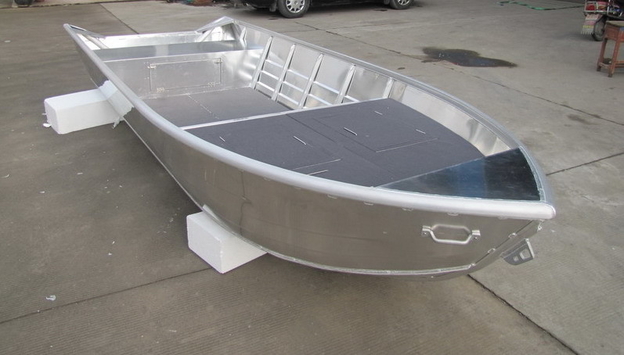Best Aluminum Boat Plans for Stability and Performance

Beyond the Blueprint: Unveiling Hidden Secrets of Stable & High-Performing Aluminum Boat Plans
Building your own aluminum boat is a thrilling challenge, blending engineering prowess with hands-on craftsmanship. But beyond the readily available plans, lies a realm of often-overlooked factors that dramatically impact stability and performance. This article delves into these hidden aspects, offering fresh perspectives for hobbyists, builders, and educators alike.
The Unsung Heroes of Aluminum Boat Design: Beyond the Obvious
Most boat plans focus on hull shape and dimensions. But what about the less glamorous, yet equally crucial elements? Let's explore some often-neglected aspects through a Q&A format.
Q: How does the choice of aluminum alloy *really* affect stability and performance?
A: The answer goes beyond simply choosing 5052 or 6061. The *thickness* and *temper* of the aluminum sheet are critical. Thinner sheets, while lighter, compromise strength and impact resistance, directly impacting long-term stability and the boat’s ability to handle rough waters. Similarly, the temper (the alloy's heat treatment) affects its stiffness and yield strength. While readily available plans often specify a standard alloy, researching the specific mechanical properties of different tempers (e.g., H32 vs. O) can lead to significant improvements in performance without considerable weight penalties. This information is readily available from aluminum manufacturers' datasheets â€" a resource often underutilized by hobbyist builders.
Q: What's the secret to minimizing unwanted vibrations and noise?
A: Many plans neglect the importance of structural damping. Vibrations from the engine or rough water can be surprisingly detrimental to both the boat's longevity and the user experience. Introducing strategically placed structural damping materials (e.g., viscoelastic polymers) within the hull structure can significantly reduce these unwanted vibrations. This is rarely detailed in standard plans but can drastically improve ride comfort and prevent fatigue cracking over time.
Q: How can I optimize the boat's weight distribution for superior handling?
A: Achieving optimal weight distribution is crucial for stability and maneuverability. While plans usually provide center-of-gravity calculations, they often lack the nuance of dynamic weight distribution. Consider the placement of heavy components like the engine and fuel tanks, not just at rest, but during operation. How will the weight shift under acceleration, braking, or when turning? Detailed simulations (even simple ones using free software) can reveal surprising imbalances, allowing for proactive adjustments during construction.
Real-World Lessons: Learning from Experience
Let's consider a real-world example. A seasoned boat builder I know, John, initially followed a widely available aluminum jon boat plan. He experienced excessive vibrations at higher speeds. After meticulous analysis, he realized the plan lacked sufficient stiffening ribs in critical areas of the hull. He adapted the plan by adding strategically placed reinforcements, dramatically reducing vibrations and improving the overall ride quality. This highlights the importance of critically evaluating plans and adapting them to specific needs and conditions.
Beyond the Plans: A Call for Innovation
The future of aluminum boat design lies in integrating cutting-edge technologies and design principles. This includes:
- Computational Fluid Dynamics (CFD) simulations: These allow for precise prediction of hydrodynamic performance before construction, optimizing hull design for speed and fuel efficiency.
- Finite Element Analysis (FEA): This helps assess the structural integrity of the boat under various loads, ensuring durability and safety. Free or low-cost FEA software is now readily available, empowering builders to analyze their designs.
- Additive manufacturing (3D printing): This technology could revolutionize the creation of custom brackets, fittings, and other components, allowing for highly customized and optimized designs.
By embracing these innovative approaches and critically evaluating existing plans, we can elevate the design and construction of aluminum boats to new levels of performance and stability. The journey beyond the blueprint is where true innovation lies.
0 comments:
Post a Comment
Note: Only a member of this blog may post a comment.